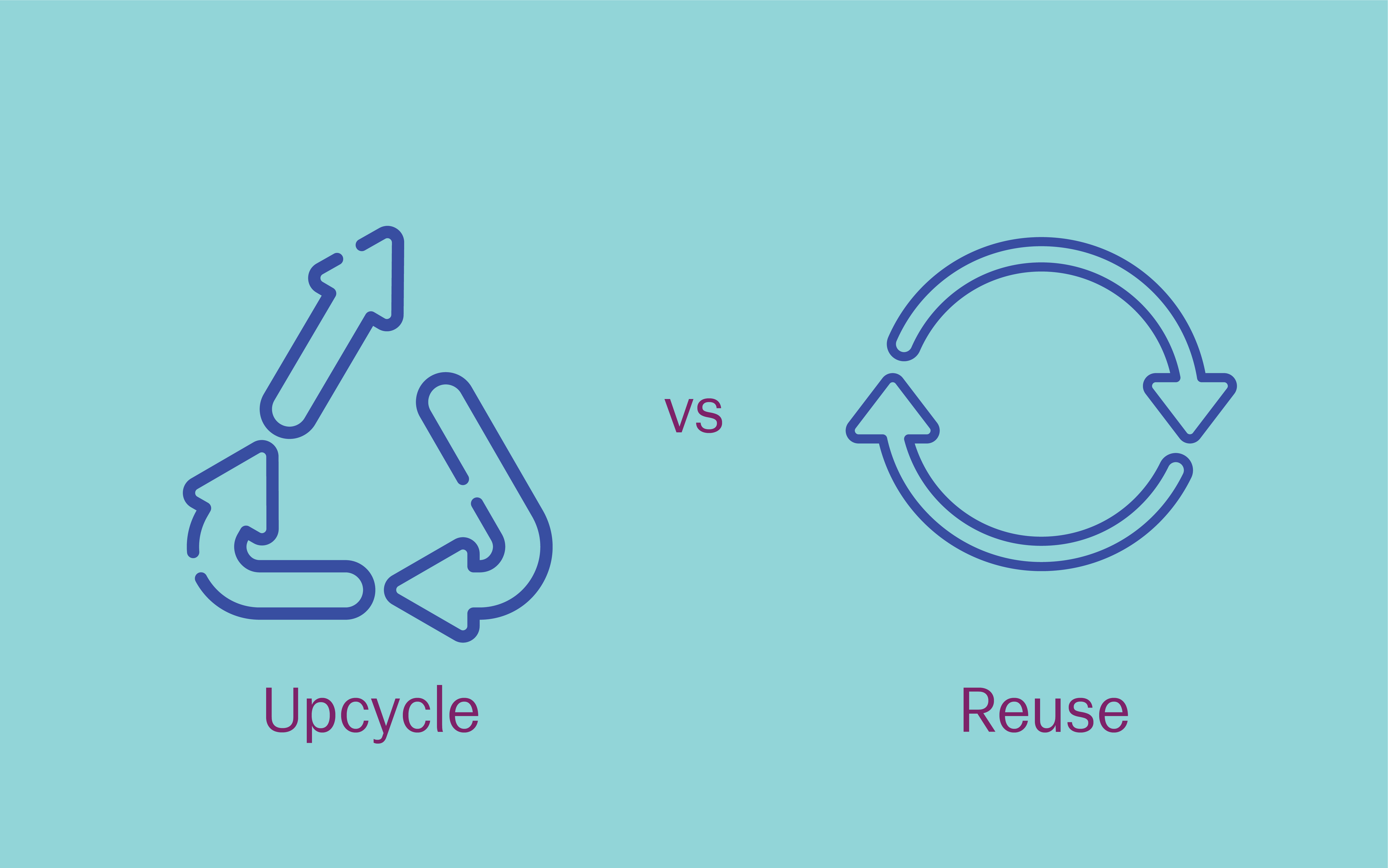Reuse vs upcycle in fashion: Key differences & environmental benefits

Sustainability is everywhere in fashion these days. With the growing concern about environmental impact, two key buzzwords have emerged: upcycle and reuse. While both focus on reducing waste and promoting a more sustainable wardrobe, they’re not exactly the same. This is how I was explaining to my friend at Wildlife Watch who made me realize I should write an article about this topic.
What is reuse in fashion?
Reuse is exactly what it sounds like: using an item again for the same or a similar purpose. In fashion, it means taking clothing you already own and wearing it again. Whether you’re passing it along to someone else or simply re-wearing it yourself, reuse keeps garments in circulation and out of the landfill.
Examples of reuse in fashion
- Wearing your old clothes: The easiest and most common form of reuse is simply continuing to wear clothes you already own. The longer you keep wearing something, the less impact it has on the environment.
- Hand-me-downs: Passing clothing along to family or friends is a great way to reuse. This is common with kids' clothes, where items get a second (or third!) life as they’re handed down.
- Buying secondhand: Thrift shopping or purchasing vintage clothing is another form of reuse. You’re essentially giving pre-owned clothes a second chance to be loved by someone new.
Why reuse is good for the environment?
- Cuts down on demand for new products: The longer clothes stay in circulation, the less new stuff we need to make. This saves resources like water and energy.
- Reduces waste: Reusing clothes keeps them out of landfills, where textiles make up a huge portion of waste.
- Lower carbon footprint: Reusing items means fewer new clothes are produced, reducing the carbon emissions tied to manufacturing, shipping, and disposal.
Reuse is simple and effective—it’s all about holding onto what we already have and not rushing to get rid of it.
What Is Upcycling in Fashion?
Upcycling takes things to the next level by transforming old or unwanted clothes into something new and improved. Instead of just reusing an item as it is, upcycling involves changing it—whether that means cutting, sewing, adding embellishments, or even completely redesigning the garment.
Upcycling brings creativity into the mix, turning your old clothes into unique, one-of-a-kind pieces that might even become more valuable than they were originally.
Examples of upcycling in fashion
- Turning jeans into a jacket: If your favorite pair of jeans is too worn out to wear, try upcycling them into a new denim jacket, skirt, or bag.
- Adding embellishments: Give a plain t-shirt a fresh look with embroidery, patches, or fabric paint.
- Reworking vintage items: Have a vintage dress from the '80s that’s no longer your style? Turn it into something modern by changing the fit or adding new fabric to it.
- Repurposing old fabric: Fabric scraps, old linens, or even worn-out clothes can be upcycled into new accessories like bags, pillows, or scarves.
Why upcycling is good for the environment?
- Reduces waste: By turning old clothes into something new, you’re keeping them out of the trash and giving them a second (or third) life.
- Saves resources: Upcycling avoids the need to use new materials, saving raw materials, water, and energy in the process.
- Creative and personal: Upcycled pieces are often unique, giving you a chance to showcase your personal style while supporting sustainability.
Upcycling is all about getting creative and transforming what’s old into something fresh and exciting.
Which is better for sustainability?
Both upcycling and reuse play important roles in the sustainable fashion movement. Here’s how each practice helps the environment
- Reuse: It’s the easiest way to keep clothes in circulation longer, which reduces the need for new clothes. Reuse helps slow down the fashion cycle, making sure we don’t overconsume. It’s a simple, everyday practice that requires no special skills.
- Upcycling: While it takes more effort and creativity, upcycling has the power to turn old clothes into high-value items. By reimagining and transforming garments, upcycling helps create truly unique pieces that keep waste out of landfills. Plus, it’s a fun way to express your personal style in a sustainable way.
How you can embrace both practices?

- Keep your clothes longer: This is the easiest way to reuse what you already own. Avoid discarding garments that are still in good condition.
- Swap with friends: Instead of throwing out clothes you no longer wear, host a clothing swap with friends or family. It’s a great way to give your old pieces a new home.
- Try some DIY upcycling: Upcycling doesn’t have to be complicated. You can start small by adding a patch to your favorite jacket, shortening a pair of jeans into trendy shorts, or painting an old tote bag.
- Shop secondhand: Thrift shops and vintage stores are perfect for reusing clothes. You’ll find unique pieces that no one else has, and you’re helping reduce demand for new clothing.
-
Support upcycled fashion brands: More brands are embracing upcycled fashion, so look for those that create new pieces from pre-loved items. Our curated list of upcycled and eco-conscious fashion brands are provided in the Resources section below.
So, next time you’re about to throw away that old dress or pair of jeans, think about how you can reuse or upcycle it instead—your wardrobe (and the environment) will thank you.
Resources
- Patagonia: Through their Worn Wear program, they sell upcycled outdoor gear, encouraging customers to trade in their old items.
- Re/Done: This brand turns vintage denim into stylish new jeans and jackets, proving that upcycling can be both fashionable and sustainable.
- Bottletop: Known for creating luxury accessories from discarded materials, Bottletop showcases the creative potential of upcycling.
- Toms: Their Rescue Shoes program gives old shoes a second life, turning them into new footwear or repurposing them into other products.
- Tags: environment


